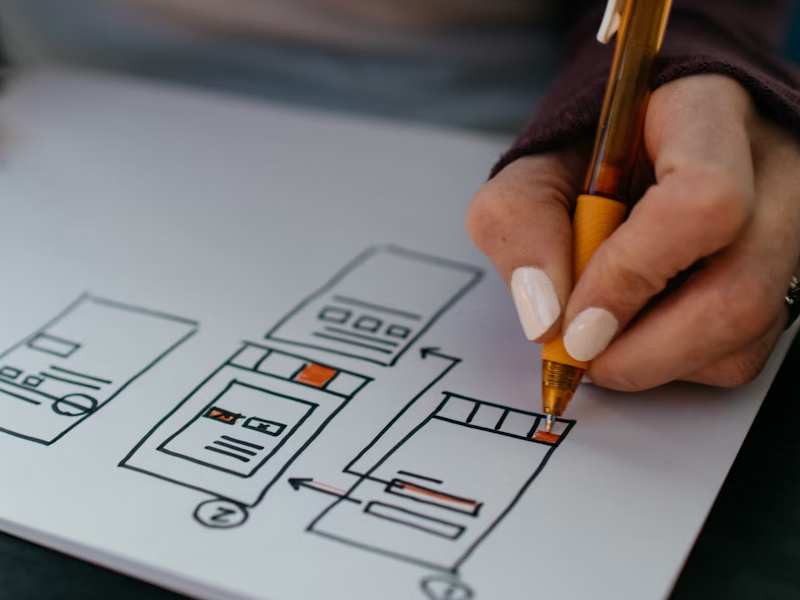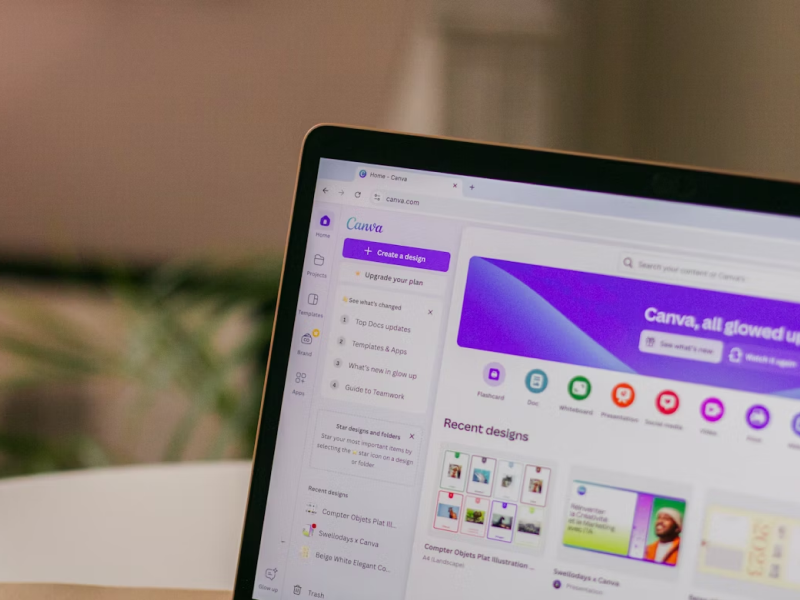“Good artists copy, great artists steal.” - Pablo Picasso
What exactly does this mean in the UI/UX design world is that in order to do great things we can get inspired from our competition but never copy them. Analyse and pay attention to their moves in order to design and deliver the best projects available. Any innovative UI UX design requires a clear mind that lets the designer mind get inspired and act upon the trigger and the information that they are presented with.
But since the dawn of time, people have been divided into two categories – the ones who came up with ideas and those who followed them. Creation and imagination don’t come easy and as they do they give the mind the power to be unique and to come up with ideas that can make a change. If Einstein had wanted to copy his competitors he would have created a new type of candle holder instead of coming up with the discovery of electricity. Small steps have the power to impact the whole world, and his discovery is just one small step compared to the journey that brought us here.
And this kind of change happens every day. We are faced daily with options that can impact our life and other’s life so choosing to be original should be our first choice. And this also applies when designing.
And in more recent times UI UX designers started to get a little too inspired by other famous apps and web designs. We have big companies like, Uber, Airbnb, and Spotify, all with great UI UX designs that can be recognized with only one glance. So, the thought that comes up in everyone’s mind is whether or not we should copy it.
Copying a famous design causes confusion.
It worked for them, it should also work for me! Well, not quite. When you use similar elements in your design your user expects them to act and be placed in the exact same spot that they are used to. People enjoy a familiar user interface. Changing their properties, colors, and placement will give your user the impression that something is odd. Think about the drawers where you can find your socks. They are always placed in the exact same spot, you would be able to find them blindfolded, which creates the feeling of comfort and familiarity.
But if someone changes places and you don’t know where exactly they are you will probably get a little tense, I certainly would. There are the same socks but the spot is different, and as minor as this can seem it really isn’t. It can make you feel uneasy and can even trigger a bad user experience, and no one wants that. Your users are used to a certain order, they create deductions and expect your elements to act a certain way, so when you copy a design they make the same assumption. And when your UI UX design doesn’t interact as it is supposed to do it leaves your user hanging and wondering why the user interface is suddenly completely different.
Copying a famous UI UX design furthers us away from the UX purpose.
When we copy a design we get further away from our UX mission. Meaning that it will be harder to see and prevent any problems your user might face when experiencing and interacting with your design. Yet a designer can’t foresee how your design will be treated by its users when elements from your design are not really yours. When creating a design your purpose is to create elements that suit your needs, and this can be applied to any UI UX designer’s work. However, when you are copying elements their purpose fades away and you are losing the UX purpose.
Think about the memories you have from school. Remember the times when you were copying your colleagues' homework when you forgot to do it? Well, your homework might have been correct but you had no idea how you got the answer. The same happens when copying, you miss out on the whole thinking process. A copied element might look good but you don’t know if it is fitted for that situation. A UX designer has the mission of telling a story, and you can tell a story properly if you have no idea what happened in it.
You don’t know their missions and their target audience.
We can all agree on the fact that every design and product has a targeted audience. And when copying a design you don’t know which one is that. It’s also a known fact that every design needs a well-done audience analysis that describes your user persona and helps you understand how they act. And, most of the time the audience it’s not quite the same. A pet app can’t have the same audience as a gardening app or apps tailored for kids, each and every app is designed to be understood and used by those specific users. So, copying elements from other app designs will only be a restless activity.
When using the same elements as other designs you will also get your audience to lose trust and credibility in your design. As long as your UI UX design doesn’t have the same purpose as the one you are copying it won’t work appropriately and will cause a bad user experience.
It has a negative impact on SEO
Search engines will know when you are copying a design and will take care of your design, ranking it as low as possible – and no one wants to have their creation hidden from the eyes of their users. Search engines have the capability to recognize if you are using unique designs and help you with your SEO ranking.
From legal consequences to bad ranking, copying a design leads to no god. So, try and stay as original as possible. Everything around us is getting smarter so try and stay as original as possible in order to keep your design up and running.
Every designer wants to leave their mark on a design
Designers are artists, and as the famous painter, Hans Hoffman, says “Design is the intermediary between information and understanding.”. We need to understand what we are creating, leave our personal touch, and deliver the best design every time we are creating. We live in a world where every great idea has been executed and redone endlessly. We have movies after every bestseller and remakes after every blockbuster we can think of, leading us to us think that copying almost seems normal.
But for an artist to copy someone else’s work just seems impossible to imagine, taking credit for something they have done it’s simply not ethical. As Robert L. Peters said, “Design creates culture. Culture shapes values. Values determine the future.”. We can’t do that with a design that doesn’t represent what we stand for and doesn’t suit our values. Copying a design makes you lose your power of delivering a message and can make you forget that your purpose is to be innovative and get inspired by anyone’s work.
Keeping up with all new designs and hanging on to what and how we should transform our vision into a voice is a harder task than you could think. Being productive while staging creative and delivering scalable solutions can take up our whole time in an industry that has no patients. So, a solution that can cover all our problems can be using a design system.
A design system creates productivity and efficiency by developing elements that can be personalized and used by a designer or by everyone from a team. It creates accessible libraries that can store assets and be later used or integrated into a design. Design systems give you the ability to create a website design or an app design from scratch, only needing your personal touch when it comes to customizing your already existing elements.
We at uinkits understand the importance of inputs in great user experiences and creating amazing UI designs. That’s why we’ve developed a Figma UI Kit with design components that include these essential UI elements that enable you to design intuitive and user-friendly interfaces effortlessly.
“You press the button, we do the rest,” – Kodak.
Inspired by this iconic tagline from Kodak, we believe in simplifying the design process for you. Our Figma UI Kit, uinkits, is a complete design system with UI components that allows you, as a UI UX designer, to create your products as quickly as pressing a button.
Our design system includes components, icons, variables, cards, buttons, and everything you need for your design process. All you have to do is take your UI design component needed, and you’re ready to use it in your designs!








